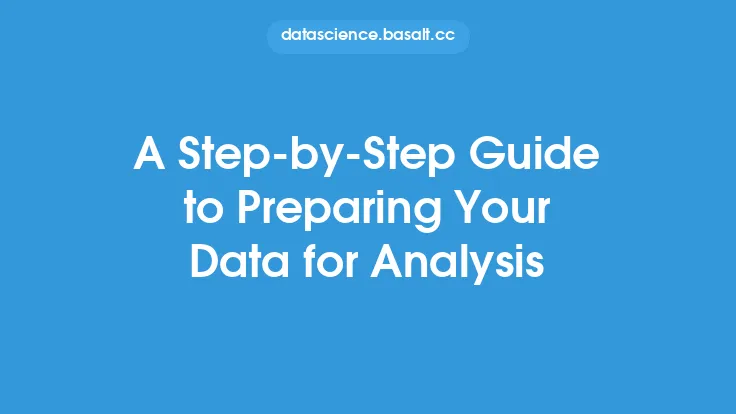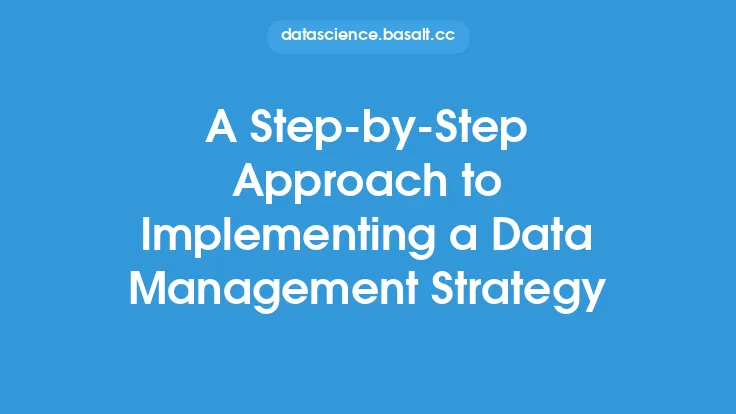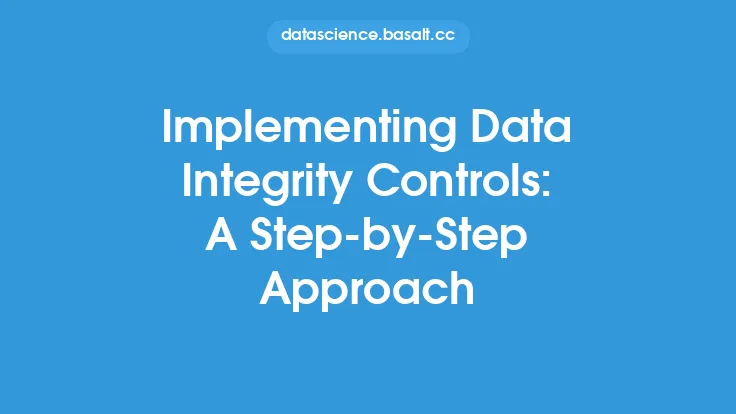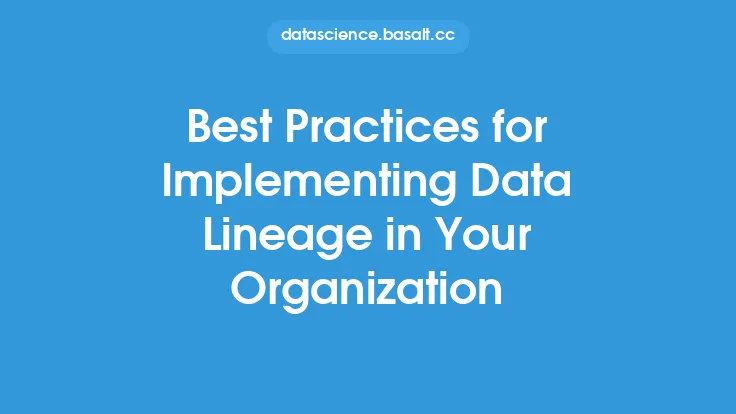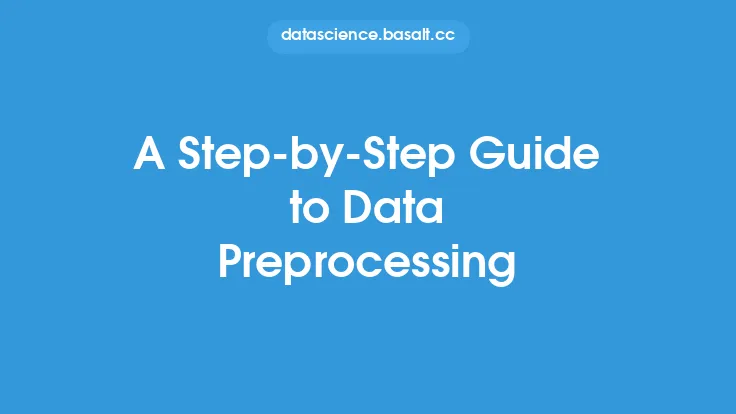Implementing data provenance in an organization is a crucial step towards ensuring the quality, reliability, and transparency of data. Data provenance refers to the process of tracking the origin, evolution, and movement of data throughout its lifecycle. It provides a clear understanding of how data is created, processed, and transformed, which is essential for making informed decisions, reproducing results, and complying with regulatory requirements. In this article, we will provide a step-by-step guide on implementing data provenance in your organization.
Understanding the Requirements
Before implementing data provenance, it is essential to understand the requirements of your organization. This includes identifying the types of data that need to be tracked, the sources of the data, and the stakeholders who will be using the data. It is also crucial to determine the level of granularity required for tracking data provenance, such as whether to track data at the row level, column level, or table level. Additionally, you need to consider the scalability and performance requirements of your data provenance system, as well as any regulatory or compliance requirements that need to be met.
Designing the Architecture
The next step is to design the architecture of your data provenance system. This includes deciding on the type of data storage to use, such as a relational database or a NoSQL database, and the data model to employ, such as a graph-based or a relational model. You also need to determine the data ingestion mechanisms, such as APIs, messaging queues, or file uploads, and the data processing workflows, such as ETL (Extract, Transform, Load) or ELT (Extract, Load, Transform). Furthermore, you need to consider the security and access control mechanisms to ensure that only authorized personnel can access and modify the data.
Implementing Data Provenance Tracking
Once the architecture is designed, the next step is to implement data provenance tracking. This involves creating a system that can capture and store metadata about the data, such as the source, creation time, modification time, and access history. There are several techniques for tracking data provenance, including:
- Timestamping: assigning a timestamp to each data element to track when it was created or modified
- Versioning: maintaining a version history of each data element to track changes
- Lineage: tracking the origin and evolution of each data element
- Ancestry: tracking the relationships between data elements
You can use various tools and technologies to implement data provenance tracking, such as data catalogs, data lineage tools, and data governance platforms.
Integrating with Existing Systems
Data provenance tracking should be integrated with existing systems and workflows to ensure seamless data flow and minimal disruption to business operations. This includes integrating with data sources, such as databases, data warehouses, and cloud storage, as well as with data processing tools, such as ETL tools, data integration platforms, and business intelligence systems. You should also consider integrating with security and access control systems to ensure that data provenance tracking is aligned with organizational security policies.
Monitoring and Maintaining
Once the data provenance system is implemented, it is essential to monitor and maintain it to ensure that it continues to meet the organization's requirements. This includes monitoring data quality, data completeness, and data consistency, as well as performing regular audits and compliance checks. You should also establish a data governance framework to ensure that data provenance tracking is aligned with organizational data governance policies and procedures.
Best Practices and Considerations
When implementing data provenance, there are several best practices and considerations to keep in mind. These include:
- Standardization: standardizing data formats and metadata to ensure consistency and interoperability
- Scalability: designing the system to scale with growing data volumes and user base
- Security: ensuring that data provenance tracking is secure and access-controlled
- Compliance: ensuring that data provenance tracking meets regulatory and compliance requirements
- Training and awareness: providing training and awareness programs to ensure that users understand the importance and benefits of data provenance tracking
Tools and Technologies
There are several tools and technologies available to support data provenance implementation, including:
- Data catalogs: such as Alation, Collibra, and Informatica
- Data lineage tools: such as Talend, IBM InfoSphere, and SAP Data Services
- Data governance platforms: such as Oracle Enterprise Governance, IBM OpenPages, and SAP Master Data Governance
- Cloud-based platforms: such as Amazon Web Services (AWS), Microsoft Azure, and Google Cloud Platform (GCP)
These tools and technologies can help automate data provenance tracking, improve data quality, and enhance data governance.
Conclusion
Implementing data provenance in your organization is a critical step towards ensuring the quality, reliability, and transparency of data. By following the steps outlined in this article, you can design and implement a data provenance system that meets your organization's requirements and provides a clear understanding of how data is created, processed, and transformed. Remember to consider the requirements, design the architecture, implement data provenance tracking, integrate with existing systems, monitor and maintain, and follow best practices and considerations to ensure a successful implementation.
